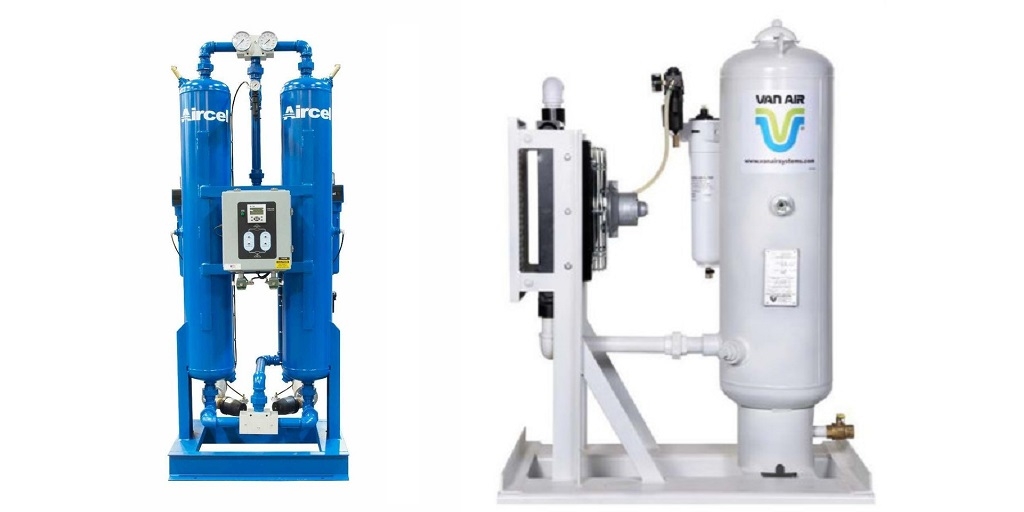Why Humidity Control Matters: A Guide to Laboratory Air Dryers

Humidity levels impact everything from the accuracy of experiments to the longevity of expensive equipment in a lab.
Laboratory environments are meant to be controlled. Too much moisture? Expect condensation, calibration nightmares, and potentially some spectacular short circuits. Too little? Some materials might not cure properly, and biological samples could degrade before their time.
The sweet spot for relative humidity (RH) in most research settings sits between 40% and 60%. Anything beyond that, and they’re practically inviting contamination, equipment issues, and unpredictable results into their workspace. This is why having a laboratory air dryer isn’t just nice to have—it’s non-negotiable.
When Humidity Becomes a Saboteur
Precision is the name of the game in laboratories, yet fluctuating humidity loves throwing a wrench in the process. Materials change properties, instruments drift from their calibrated settings, and microbial growth turns pristine lab spaces into unintentional petri dishes.
Take silicone RTV sealants, for example. These compounds rely on atmospheric moisture to cure properly. If humidity is off, the curing rate becomes a guessing game, and that’s not exactly ideal for industrial applications. Controlling air moisture ensures that these processes happen as expected—because no one wants to explain to their supervisor why a project failed due to ‘bad air.’
And let’s not forget delicate biological samples. Too much humidity can break down their integrity, rendering weeks—or even months—of work completely useless. At that point, it’s not just frustrating—it’s an expensive mistake.
Choosing the Right Laboratory Air Dryer (Yes, It Actually Matters)
Assuming that any air dryer will get the job done is about as effective as assuming a cracked beaker will hold liquid. Selecting the right laboratory air dryer requires considering several factors. And no, ignoring these factors and hoping for the best isn’t a viable strategy.
Six major factors should be accounted for when determining the correct dryer size:
- Maximum airflow (scfm): The dryer needs to handle the lab’s peak demand. Underestimating this leads to moisture sneaking into the system.
- Desired pressure dew point: This determines just how dry the air needs to be. Desiccant dryers reach ultra-low dew points (-40°C/-40°F or -100F), while refrigerant dryers hold steady at about 3°C/37°F.
- Inlet air pressure: Affects efficiency and performance—too low, and the system underperforms.
- Inlet air temperature: Hot air holds more moisture, so understanding incoming air temperature is critical.
- Ambient air temperature (and water temperature for water-cooled condensers): Affects system cooling efficiency.
- Installation environment: Placement within the facility determines whether extra ventilation or cooling is needed.
Each of these plays a role in ensuring a laboratory air dryer functions properly instead of becoming an expensive paperweight.
Which One Actually Works for You?
Not all dryers are created equal, and picking the wrong one is a costly mistake. Here’s the breakdown:
- Refrigerant Dryers: More budget-friendly and efficient for moderate moisture removal. They maintain a dew point of 3°C/37°F and work well in applications where ultra-dry air isn’t a necessity. Bonus: They cost less to operate and maintain.
- Desiccant Dryers: The go-to option for those who demand extremely dry air. These reach a dew point of -40°C/-40°F and eliminate virtually all moisture. However, they require more upkeep and have higher operational costs.
For anyone working with sensitive materials, opting for a desiccant laboratory air dryer is often the safest bet. It keeps conditions predictable—no surprises, no ruined experiments.
Don’t Let Humidity Hijack Your Lab
Scientists have enough variables to deal with. Letting humidity control become another one is just unnecessary. Whether they’re working with sensitive instruments, biological samples, or moisture-dependent materials, a laboratory air dryer ensures that air quality remains consistent. Precision should be dictated by the research, not by a fluctuating climate.
For those ready to stop fighting humidity and start controlling it, Air & Vacuum Process Inc. has an extensive catalog of compressed air dryers built to keep labs running smoothly. Because let’s be honest—there are better things to experiment with than whether or not an air dryer actually works.
For more information about Air Compressor Drain Valve and 10 HP Air Compressor Please visit: Air & Vacuum Process Inc.
- Questions and Answers
- Opinion
- Motivational and Inspiring Story
- Technology
- Live and Let live
- Focus
- Geopolitics
- Military-Arms/Equipment
- Güvenlik
- Economy
- Beasts of Nations
- Machine Tools-The “Mother Industry”
- Art
- Causes
- Crafts
- Dance
- Drinks
- Film/Movie
- Fitness
- Food
- Oyunlar
- Gardening
- Health
- Home
- Literature
- Music
- Networking
- Other
- Party
- Religion
- Shopping
- Sports
- Theater
- Health and Wellness
- News
- Culture

